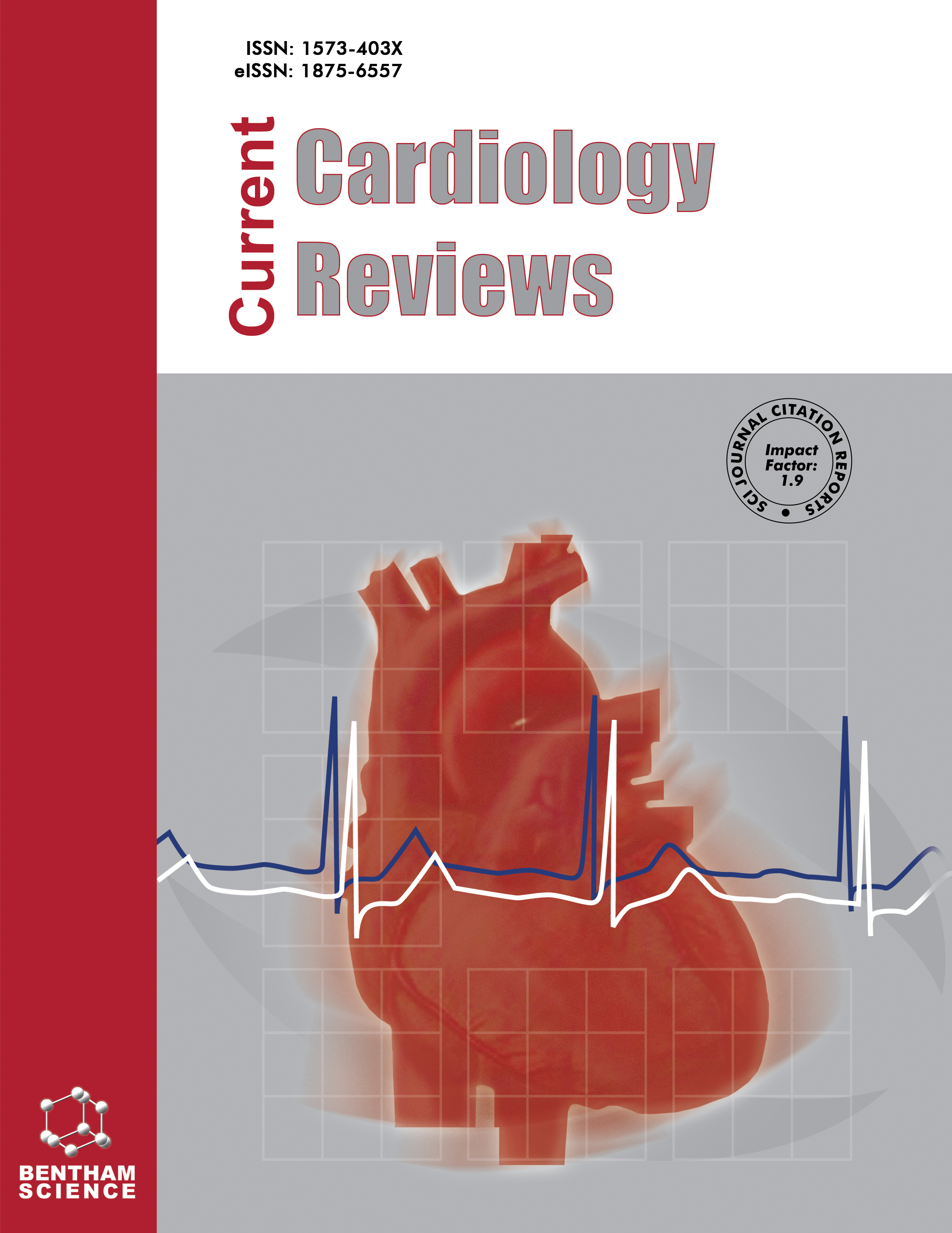- Home
- A-Z Publications
- Current Cardiology Reviews
- Previous Issues
- Volume 8, Issue 2, 2012
Current Cardiology Reviews - Volume 8, Issue 2, 2012
Volume 8, Issue 2, 2012
-
-
Coronary CT and the Coronary Calcium Score, the Future of ED Risk Stratification?
More LessAuthors: Leticia Fernandez-Friera, Ana Garcia-Alvarez, Gabriela Guzman and Mario J. GarciaAccurate and efficient evaluation of acute chest pain remains clinically challenging because traditional diagnostic modalities have many limitations. Recent improvement in non-invasive imaging technologies could potentially improve both diagnostic efficiency and clinical outcomes of patients with acute chest pain while reducing unnecessary hospitalizations. However, there is still controversy regarding much of the evidence fo Read More
-
-
-
Point of Care Cardiac Ultrasound Applications in the Emergency Department and Intensive Care Unit - A Review
More LessAuthors: Robert T. Arntfield and Scott J. MillingtonThe use of point of care echocardiography by non-cardiologist in acute care settings such as the emergency department (ED) or the intensive care unit (ICU) is very common. Unlike diagnostic echocardiography, the scope of such point of care exams is often restricted to address the clinical questions raised by the patient’s differential diagnosis or chief complaint in order to inform immediate management decisions. In this ar Read More
-
-
-
Novel Biomarkers for Risk Stratification and Identification of Lifethreatening Cardiovascular Disease: Troponin and Beyond
More LessAuthors: Louai Razzouk, Mario Fusaro and Ricardo EsquitinChest pain and other symptoms that may represent acute coronary syndromes (ACS) are common reasons for emergency department (ED) presentations, accounting for over six million visits annually in the United States [1]. Chest pain is the second most common ED presentation in the United States. Delays in diagnosis and inaccurate risk stratification of chest pain can result in serious morbidity and mortality from ACS, Read More
-
-
-
Stress Myocardial Perfusion Imaging in the Emergency Department - New Techniques for Speed and Diagnostic Accuracy
More LessAuthors: Sheri D. Harrison, Mark A. Harrison and W. Lane DuvallEmergency room evaluations of patients presenting with chest pain continue to rise, and these evaluations which often include cardiac imaging, are an increasing area of resource utilization in the current health system. Myocardial perfusion imaging from the emergency department remains a vital component of the diagnosis or exclusion of coronary artery disease as the etiology of chest pain. Recent advances in camera techn Read More
-
-
-
Lung Ultrasound in the Management of Acute Decompensated Heart Failure
More LessAuthors: Shiang-Hu Ang and Phillip AndrusOnce thought impracticable, lung ultrasound is now used in patients with a variety of pulmonary processes. This review seeks to describe the utility of lung ultrasound in the management of patients with acute decompensated heart failure (ADHF). A literature search was carried out on PubMed/Medline using search terms related to the topic. Over three thousand results were narrowed down via title and/or abstract revie Read More
-
-
-
Utility of the Electrocardiogram in Drug Overdose and Poisoning: Theoretical Considerations and Clinical Implications
More LessAuthors: Christopher Yates and Alex F. ManiniThe ECG is a rapidly available clinical tool that can help clinicians manage poisoned patients. Specific myocardial effects of cardiotoxic drugs have well-described electrocardiographic manifestations. In the practice of clinical toxicology, classic ECG changes may hint at blockade of ion channels, alterations of adrenergic tone, or dysfunctional metabolic activity of the myocardium. This review will offer a structured approach to EC Read More
-
-
-
Screening, Evaluation, and Early Management of Acute Aortic Dissection in the ED
More LessAuthors: Reuben J. Strayer, Peter L. Shearer and Luke K. HermannAcute aortic dissection (AAD) is a rare and lethal disease with presenting signs and symptoms that can often be seen with other high risk conditions; diagnosis is therefore often delayed or missed. Pain is present in up to 90% of cases and is typically severe at onset. Many patients present with acute on chronic hypertension, but hypotension is an ominous sign, often reflecting hemorrhage or cardiac tamponade. The chest x-ray Read More
-
-
-
Newer Oral Anticoagulant Agents: A New Era in Medicine
More LessAuthors: Ramil Goel and Komandoor SrivathsanAfter a gap of almost 60 years following the development of warfarin, 2 new categories of oral anticoagulant agents have been approved for clinical use – the direct thrombin inhibitors and factor Xa inhibitors. These agents promise to be more convenient to administer with fixed dosing but still have equivalent efficacy and improved bleeding risk compared to warfarin. The clinical community is looking forward to the wide Read More
-
Volumes & issues
-
Volume 21 (2025)
-
Volume 20 (2024)
-
Volume 19 (2023)
-
Volume 18 (2022)
-
Volume 17 (2021)
-
Volume 16 (2020)
-
Volume 15 (2019)
-
Volume 14 (2018)
-
Volume 13 (2017)
-
Volume 12 (2016)
-
Volume 11 (2015)
-
Volume 10 (2014)
-
Volume 9 (2013)
-
Volume 8 (2012)
-
Volume 7 (2011)
-
Volume 6 (2010)
-
Volume 5 (2009)
-
Volume 4 (2008)
-
Volume 3 (2007)
-
Volume 2 (2006)
-
Volume 1 (2005)
Most Read This Month
Article
content/journals/ccr
Journal
10
5
false
en


